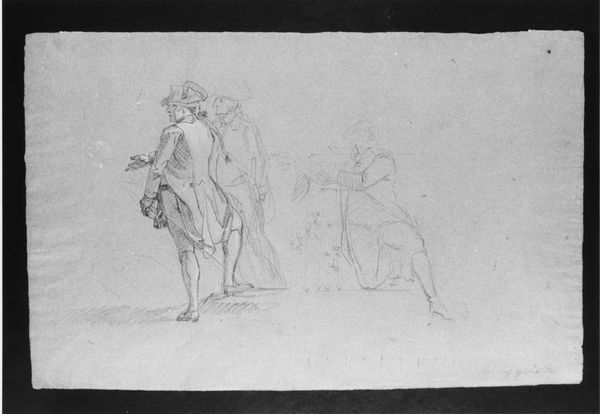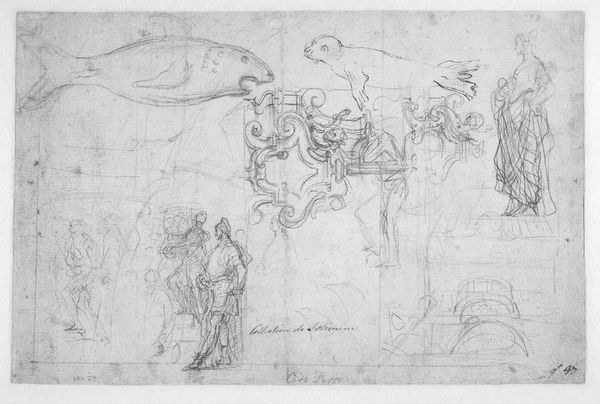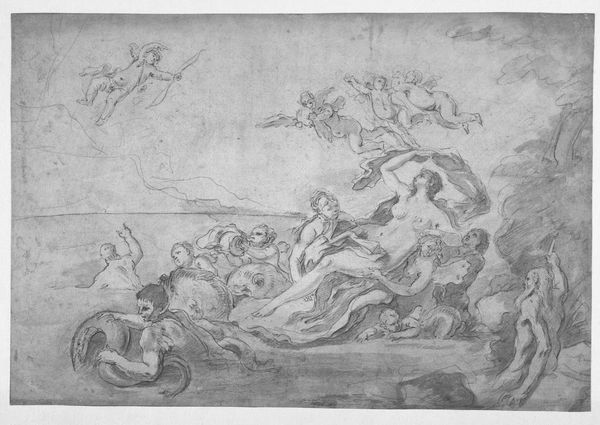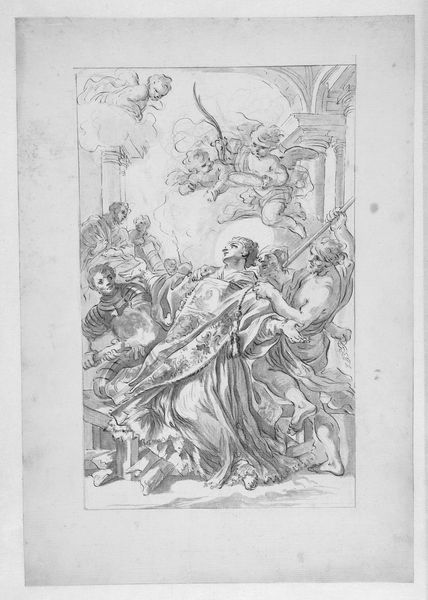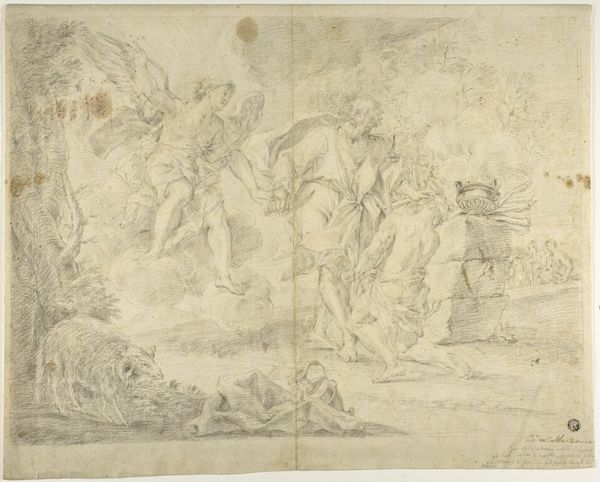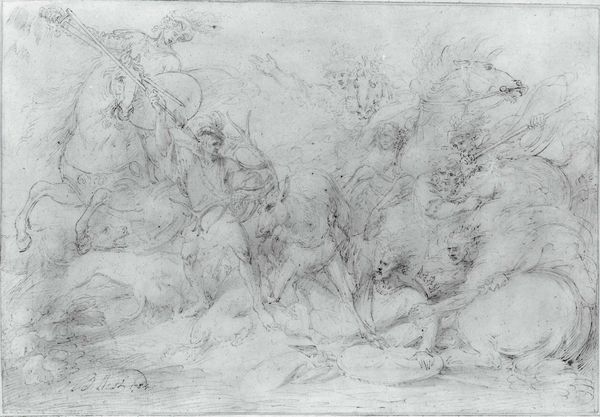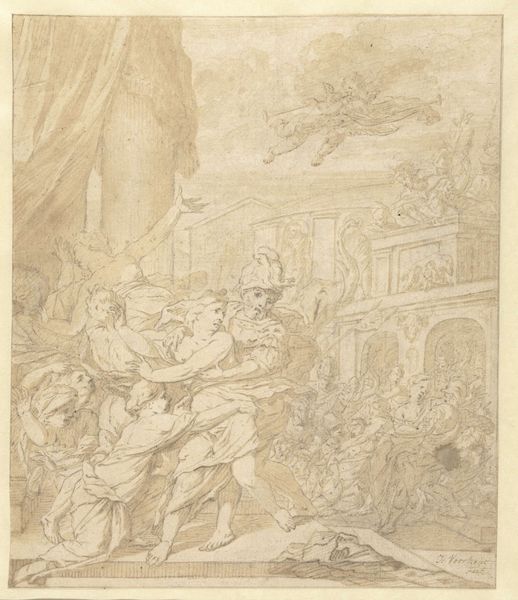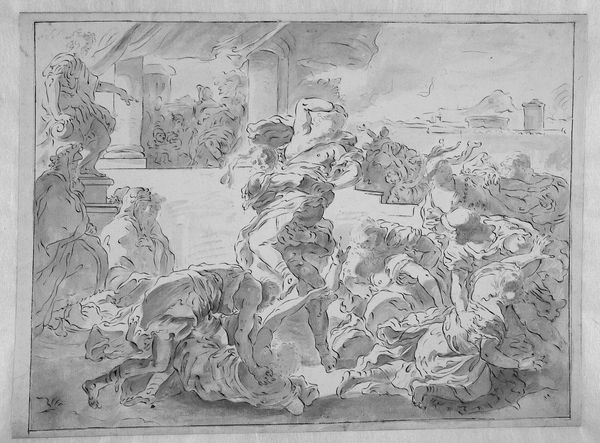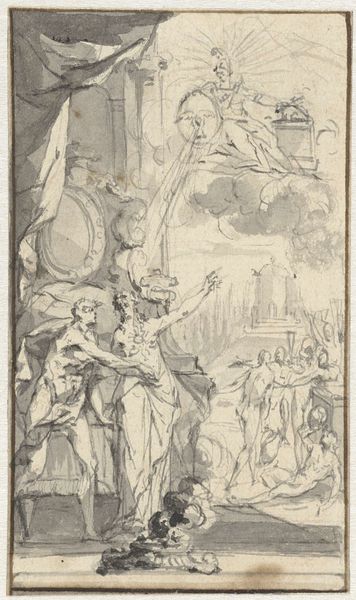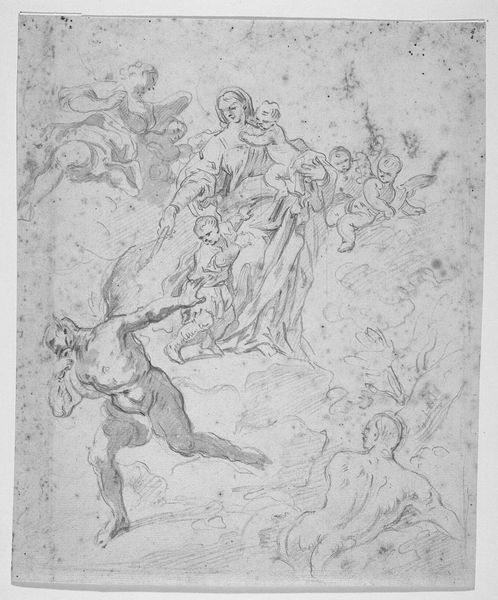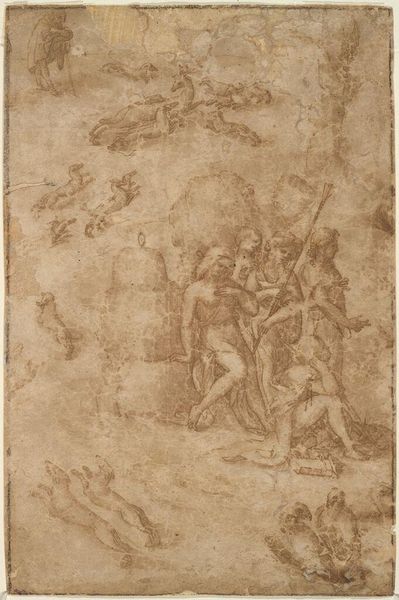
Two sketches of flying figures and garlands 1710 - 1780
0:00
0:00
drawing
#
drawing
#
amateur sketch
#
rippled sketch texture
#
natural shape and form
#
pencil sketch
#
incomplete sketchy
#
hand drawn type
#
etching
#
hand drawn
#
rough sketch
#
initial sketch
Dimensions: 185 mm (height) x 110 mm (width) (bladmaal)
Curator: This drawing, titled "Two sketches of flying figures and garlands", comes to us from Francesco La Marra. The Statens Museum for Kunst holds this piece which dates to sometime between 1710 and 1780. Editor: It's wonderfully ethereal! The wispy lines create a sense of movement, like figures dancing in the clouds. There is an unfinished quality that really captures the creative process. Curator: Precisely! As a preparatory sketch, it provides an intriguing glimpse into La Marra's methods. Note the use of graphite, likely a common and easily accessible material in his workshop. Its unassuming nature underscores the crucial role of drawing within the broader hierarchy of artistic labor during the 18th century. These sketches provided artists with a relatively inexpensive, quick means for visualizing preliminary concepts which might then gain a patron’s favor. Editor: Looking at the figures, I’m struck by how they seem unbound by earthly constraints. It speaks to the socio-cultural fascination of the time with classical mythology and allegory. The image reminds us that the patrons of this era prized depictions of the ideal and heroic as statements of cultural authority and refined taste. Curator: It raises interesting questions about La Marra's intended audience and purpose. Were these sketches intended for a large-scale painting, a sculpture, or perhaps even for engravings that could circulate widely? We can think of this kind of study as material evidence of the creative networks operating in his workshop, possibly informing and inspired by the needs of those that consumed his work. Editor: Indeed. These initial marks are suggestive of the various hands that might shape artistic creation; they reveal artistic practice not as singular act but an iterative and relational endeavor, often beholden to multiple layers of cultural patronage and reception. I see the artist responding to the commission, while his collaborators worked in unison on separate elements within their own specialist expertise. Curator: Ultimately, the drawing, even in its incompleteness, holds power, as this material residue now gives scholars the chance to revisit complex art-making scenarios from a vibrant bygone era. Editor: For me, I'll walk away seeing the delicate lines that embody lightness and a freedom of expression, as the unfinished state offers the imagination room to wander and create possibilities beyond what’s explicitly drawn.
Comments
No comments
Be the first to comment and join the conversation on the ultimate creative platform.

